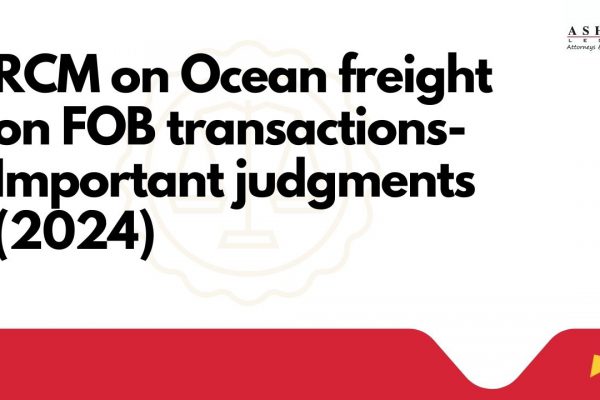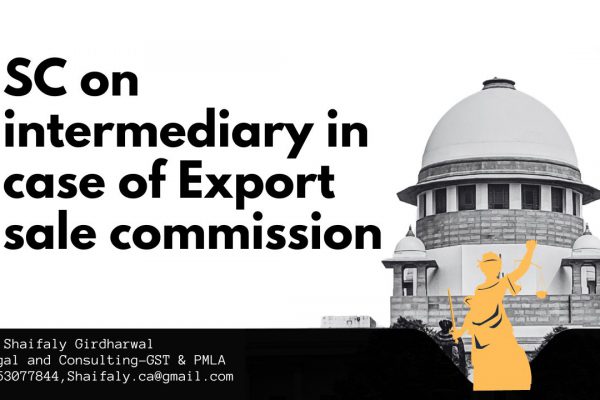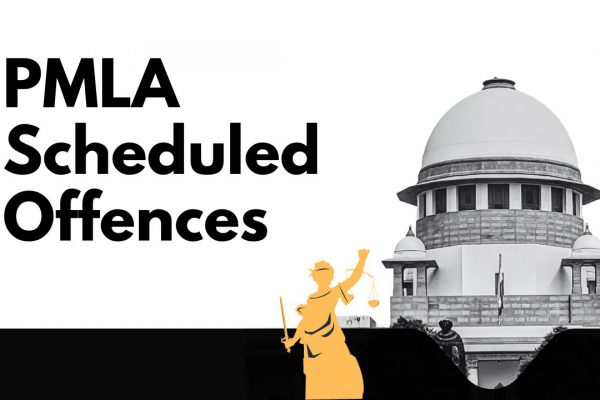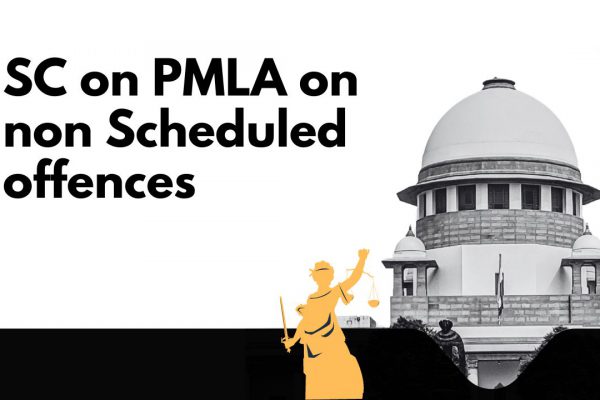Threshold for audit under GST is Registration wise or Person wise
The threshold for audit under GST is Registration wise or Person wise
The audit under the GST law owing to its first time is the next challenge not only for trade and industries also for professionals. Section 35(5) of CGST/SGST Act, 2017 (hereinafter referred to as “the Act”) envisages inter alia audit of every registered person whose turnover during a financial year exceeds the prescribed limit. The corresponding Sub-rule 3 of rule 80 of CGST/SGST Rule, 2017 (hereinafter referred to as “the rules”) prescribes such threshold limit as two crores for the purpose of section 35(5) of the Act.
However, the said rule has used the term “aggregate turnover” for the purpose of limit against the term “Turnover” referred to in said section which has resulted in unnecessary confusion among professionals with regard to the criteria of audit under GST law whether it is turnover (not defined) or aggregate turnover (as defined) which is to be considered to check applicability of audit. The Law has defined the expression “Aggregate turnover” but not the “Turnover”. There is the difference of opinion on this subject matter. Some experts are of the view that it is “Aggregate turnover” as defined u/s 2 (6) of the Act, which is to be considered as to determine the applicability of audit requirement. Others are of the view that it is ‘turnover’ (not ‘Aggregate turnover’) of a registered entity only which has to be taken into account to check the requirement of audit as envisaged u/s 35(5) of the Act.
Here, one thing is amply clear that audit under GST law will be carried out registration wise but question here for consideration is whether the provision requires audit of all registered persons (irrespective of turnover of a registered person being distinct person for the purpose of this act)having same PAN if the aggregate turnover of all such registered persons exceed 2.00 crore rupees or it requires audit of registered person, only if, the turnover of such registered person (not all registered persons having the same PAN) exceeds two crore rupees.
Let us first take an example to understand more about this issue:-
A person being individual, having manufacturing business setups in Rajasthan, Gujarat & Maharashtra States, has obtained separate GST registrations in each said States in accordance with the GST law (It is to note here that with separate registration so obtained by such person as mandatory under the GST law, such person, in respect of each such registration, is treated as distinct person (registered) for the purpose of GST law although having the same PAN). In Rajasthan, he manufactures taxable goods only and has the turnover of more than two crores in the previous financial year. In Gujarat, only exempted goods are manufactured and turnover is also more than two crore rupees. In Maharashtra, both exempted as well as taxable goods are manufactured and turnover is less than two crore rupees. Now, in such case, the question is: –
Whether such person being individual is required to get the audit of his all three businesses(each registration is a distinct person) irrespective of turnover of individual businesses as ‘aggregate turnover’ as defined under GST law is more than 2.00 crore rupees;
OR
Whether such person is required to get the audit of only those businesses (each registered business is a distinct person) whose turnover exceeds 2.00 crore turnover i.e. Rajasthan & Gujarat and audit of business registered in Maharashtra (a distinct person) is not required owing to turnover below the threshold of two crore rupees.
Let us examine this issue in the light to the provision of the GST Law. Section 35(5) provides that Every registered person whose turnover during a financial year exceeds the prescribed limit shall get his account audited by a chartered accountant or a cost accountant and shall submit a copy of the audited annual accounts, the reconciliation statement under sub-section (2) of section 44 and such other documents in such form and manner as may be prescribed.
Sub-rule 3 of Rule 80 of the rules says that Every registered person whose aggregate turnover during a financial year exceeds two crore rupees shall get his accounts audited as specified under sub-section (5) of section 35 and he shall furnish a copy of audited annual accounts and a reconciliation statement, duly certified, in form GSTR-9C, electronically through the common portal either directly or through a Facilitation Centre notified by the commissioner.
Registered Person
Before discussing the meaning of ‘turnover’ and ‘aggregate turnover’, it is very imperative to understand the connotation of words “every registered person” as section 35(5) like other various sections also starts with such words. It is to note here that in whole GST law, only three terms have been used in reference to the persons which are ‘Person’, ‘Taxable person’ and ‘Registered person’. All these three terms have been defined under the GST law. The term ‘Person’ as defines u/s 2(84), is the widest term and includes all category of the person whether registered or unregistered.
The ‘Taxable Person’ as defined u/s 2(107) includes the registered person as well as the person liable to be registered.
The term ‘Registered Person’ as defined u/s 2(94), being very narrow in its coverage, means the only person registered under u/s 25 and does not include a person having UIN. It is pertinent to note here that as per the provision of section 25(4) of the Act, A person who has obtained or is required to obtain more than one registration, whether in one state or union territory or more than one state or union territory, shall, in respect of each such registration, be treated as distinct person for the purpose of this Act. It means wherever in the GST law, the term ‘every registered person’ has been used, it refers to the single registration of a person under GST law whether in one state/UT or more than one state/UT, not all registration of a person having the same PAN.
The combined reading of section 2(94) and 25(4) of the Act clearly suggest that every single registration of a person whether in one state/UT or more than one state/UT will be a ‘Registered Person’ and will be treated as a separate/distinct person for the purpose of applicability of all provisions of the GST law.
In the example supra, such person is separately registered in the state of Rajasthan, Gujarat, and Maharashtra as mandatory under the GST law is separate/distinct registered person in respect of each such registration in said states. If it is not so then the very foundation of GST law will collapse as the present system of territorial jurisdiction will no more be workable.
Further, the intention of the legislature to treat a registered person as a separate/distinct person from another registered person having the same PAN, though explicitly mentioned under the provision of Section 25(4), is clearly revealed from the proviso of section 10 reproduced here as below:-
“Provided that where more than one registered persons are having the same Permanent Account Number [issued under the Income-tax Act, 1961 (43 of 1961)], the registered person shall not be eligible to opt for the scheme under sub-section (1) unless all such registered persons opt to pay tax under that sub-section.”
Monetary Limit
Further, it is the monetary limit of turnover which is to be prescribed by the rules. Rules are always subject to Act and cannot go beyond that. As per the provision of section 35(5), the scope of the rule is limited to fix only the monetary limit of turnover for the purpose of audit requirement. Such Rule, using term ‘Aggregate turnover’, can’t assign meaning to term ‘Turnover’.
The term ‘Aggregate turnover’ as defined u/s 2(6) of the Act, means the aggregate value of all taxable supplies (excluding the value of inward supplies on which tax is payable by a person on reverse charge basis), exempt supplies, export of goods or services or both and inter-state supplies of persons having the same Permanent Account Number, to be computed on all India basis but excluding Central tax, State tax, Union territory tax, Integrated tax and Cess. The term “turnover” has nowhere been defined under the GST law. Further, Section 2 of the Act which enumerates definitions of various terms, opens with the words ‘In this Act, unless the context otherwise requires,’ which mean definitions provided u/s 2 with respect to each term is subject to the context. A three-judge bench of the Hon’ble Supreme Court in case of Jagir Singh vs. the State of Bihar, while dealing with the expression unless the context otherwise requires the definition clause held as under:
“The general rule of construction is not only to look at the words but to look at the context, the collocation and the object of such words relating to such matter and interpret the meaning according to what would appear to be the meaning intended to be conveyed by the use of words under the circumstances.”
If the context requires otherwise then, the definitions will also change accordingly. In the context of audit as envisaged u/s 35(5) which refers turnover of a registered person, how the turnover of all registered person having the same PAN, can be considered for the purpose of threshold, by being strict to the definition of term “aggregate turnover” as defined u/s 2(6) of the Act used by the relevant rule. To consider strictly, without having regard to the context, the definition of term ‘Aggregate turnover’ as defined u/s 2(6) of the Act for the purpose of threshold for audit, doesn’t seems logical and is not the intention of the legislature so far as ‘a registered person’ is concerned. In the opinion of author the “turnover” or “aggregate turnover” for the purpose of audit, should means the aggregate value of all taxable supplies (excluding the value of inward supplies on which tax is payable by a person on reverse charge basis), exempt supplies, export of goods or services or both and inter-state supplies of persons having the same Permanent Account Number, to be computed on all India basis, but excluding Central tax, State tax, Union territory tax, Integrated tax and Cess.
Further, also, the language of section 35(5) is very clear and unambiguous so far as audit requirement of a registered person is concerned. It is ‘turnover’ of a registered person (a distinct person u/s 25(4)) which is to be considered for the purpose of threshold not the turnover of all registered person having the same PAN. If the intention of legislature was to consider ‘Aggregate Turnover’ as defined u/s 2(6) for the purpose of audit then, section 35(5) would, probably, have been started with words ‘Every Person’ as used in Chapter VI – Registration, not with ‘Every registered person’. It is the well-settled principle of interpretation of the law that if the language of a statute is clear and not ambiguous, the intention of the legislature as deduced from such plain language will be followed.
Below is a comparison to better understand the meaning and intention of the legislature so far as turnover for the purpose of audit u/s 35(5) is concerned:-
| Case. No. |
Language of provision | Remarks | Observation |
| 1. | Every registered person whose turnover exceeds | No any change in the language of the statue | Turnover of only one registered person i.e. One Vs. One |
| 2. | Every registered person whose‘aggregate’ turnover | The word ‘aggregate’ inserted before the word ‘Turnover’ | Calling one registered person but the turnover of all other registered person having same PAN i.e. One Vs. All |
| 3. | Every person whose aggregate turnover | The word ‘Registered’ before the word ‘Person’ removed | Calling all registered person having same PAN and also the turnover of all such registered person i.e. All vs All |
In above table of comparison, one may clearly see that meaning, grammatical sense and intention of the legislature is very clear in case no. 1 (Original) case no. 3(Hypothetical) but the same is ambiguous and absurd in case No. 2
Even if it is ‘Aggregate turnover’ which is to be the consideration for the purpose of audit then, in the considered opinion of the author, the modified definition of such term as justified by the context, would be such as discussed in above para.
Conclusion:
In view of above discussion, the considered opinion of the author is that it is the turnover (aggregate turnover with modified definition) of a registered person being the distinct person which is to be considered for the purpose of audit under the GST law, not the turnover of all registered person having the same PAN. However, it is highly expected that government will bring clarity to this issue or law will be suitably amended very soon.
-CA Lalit Talesara, Pali (Raj.)
Disclaimer:
While due care has been taken in preparing this opinion, the existence of mistakes and omissions herein is not ruled out. It is the personal view of the author. No assurance is given that the revenue authorities/courts will concur with the view expressed herein. Our views are based on the provision of GST law and its interpretation, which are subject to change from time to time. We do not assume any responsibility to update the view consequent to such changes.
If you already have a premium membership, Sign In.
 CA Lalit Talesara
CA Lalit Talesara
Pali, India


























